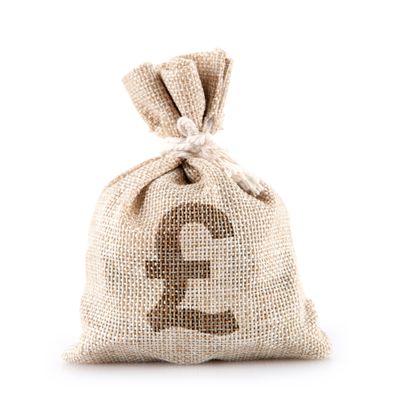1.2.11
Indirect Taxes & Subsidies
The Impact of Indirect Taxes
The Impact of Indirect Taxes
Indirect taxes are taxes on consumption. The more inelastic demand is, the more of an indirect tax is passed on to consumers. Imposing a tax on a good, shifts the market equilibrium to Point A. At point A, there is a lower quantity of output and a higher price.


Burden of a tax
Burden of a tax
- When a tax is imposed, the producer may pass on some of this cost to the consumer in the form of a higher price (grey area on the diagram) and absorb the rest (red area).
- The proportion of the tax passed onto the consumer depends on the elasticity of demand. The more inelastic the demand, the more of a tax is passed on and less 'absorbed'.
- E.g. demand for cigarettes is inelastic, producers would pass more of the tax onto consumers, knowing that demand won't decrease much.


Impact of indirect taxes on governments
Impact of indirect taxes on governments
- Indirect taxes generate revenues for governments. These revenues can then be spent on capital investment (e.g hospitals for the NHS) or transfer (or welfare) payments.
- If demand is perfectly inelastic, the quantity consumed won't change and tax revenues will increase. However, the burden of a tax would fall completely on consumers. If this was a market made up of mainly poor consumers, then this may not be a good intervention for the government. However, this would need a value judgment.


Impact of indirect taxes on consumers
Impact of indirect taxes on consumers
- If demand was perfectly inelastic, then the demand curve would be vertical.
- The quantity demanded would not change but the price paid would rise.
- The burden of the tax would fall completely on the consumer.
- If demand was perfectly elastic (horizontal demand curve), then the burden would fall completely on the producer.


Impact of indirect taxes on producers
Impact of indirect taxes on producers
- If demand is inelastic, then consumers bear the whole burden of an indirect tax.
- If demand is elastic, then producers bear the whole burden of an indirect tax.
Subsidies
Subsidies
Subsidies can correct market failure by encouraging the consumption and production of a good with positive externalities. Governments can pay subsidies to encourage the production and consumption of goods.


Examples of subsidies
Examples of subsidies
- The employment of apprentices (labour as a factor of production) can be subsidised by a government.
- A food subsidy was implemented in India to help encourage the production of affordable food in India.


The impact of a subsidy
The impact of a subsidy
- A subsidy will shift the supply curve rightwards. The quantity produced will increase and the price paid by consumers will fall.
- Consumers will pay 'Price 1+subsidy', but a supplier will be paid a 'Price 2'.
- The subsidy payment is the size of the rectangle. The size of the rectangle is equal to the size of the subsidy per unit X total output in the market.


Impact of subsidies on consumer and producer surplus
Impact of subsidies on consumer and producer surplus
- Consumers: Consumer surplus rises as the price that consumers pay has fallen and output has risen.
- Producers: Producer surplus rises because the price consumers pay + subsidy is higher than the price at the previous market equilibrium.
- Governments: Producer surplus and consumer surplus rise. However, the government must pay the size of the per unit subsidy X total output. Governments must pay for subsidies using tax revenues or government borrowing.
,h_400,q_80,w_640.png)
,h_400,q_80,w_640.png)
Subsidising positive consumption externalities
Subsidising positive consumption externalities
- A consumption subsidy will try to cut the price paid by consumers to po to increase consumption.


Subsidising positive production externalities
Subsidising positive production externalities
- A subsidy will aim to shift the supply curve rightwards to the MSC curve.
1Introduction to Markets
1.1Nature of Economics
1.1.1Economics as a Social Science
1.1.2Positive & Normative Economic Statements
1.1.3The Economic Problem
1.1.4Resources
1.1.5Production Possibility Frontiers
1.1.6Specialisation & Division of Labour
1.1.7Types of Economies
1.1.8End of Topic Test - Nature of Economics
1.1.9Application Questions - Nature of Economics
1.2How Markets Work
1.2.1Rational Decision Making
1.2.2Demand
1.2.3Elasticities of Demand
1.2.4Elasticities of Demand 2
1.2.5Elasticity & Revenue
1.2.6Supply
1.2.7Elasticity of Supply
1.2.8Price Determination
1.2.9Price Mechanism
1.2.10Consumer & Producer Surplus
1.2.11Indirect Taxes & Subsidies
1.2.12A-A* (AO3/4) - Taxing Prices or Quantities?
1.2.13Alternative View of Consumer Behaviour
1.2.14End of Topic Test - Markets
1.2.15A-A* (AO3/4) - Markets
2Market Failure
2.1Market Failure
2.2Government Intervention
2.2.1Government Intervention in Markets
2.2.2Subsidies & Price Controls
2.2.3Pollution Permits & Regulation
2.2.4A-A* (AO3/4) - European Emissions Trading
2.2.5State Provision & Information Provision
2.2.6Government Failure
2.2.7End of Topic Test - Government Intervention
2.2.8A-A* (AO3/4) - Government Intervention
3The UK Macroeconomy
3.1Measures of Economic Performance
3.1.1Measuring Economic Growth
3.1.2National Income Data
3.1.3Inflation
3.1.4Causes of Inflation
3.1.5Consequences of Inflation
3.1.6Employment & Unemployment
3.1.7Causes & Impact of Unemployment
3.1.8A-A* (AO3/4) - Hysteresis
3.1.9Balance of Payments
3.1.10Current Account Deficit & Imbalances
3.1.11End of Topic Test - Economic Performance
3.1.12Application Questions Macroeconomy
3.2Aggregate Demand
3.3Aggregate Supply
3.4National Income
4The UK Economy - Policies
4.1Macroeconomic Objectives & Policies
4.1.1Possible Objectives
4.1.2Demand-Side Policies - Monetary
4.1.3Demand-Side Policies - Monetary 2
4.1.4A-A* (AO3/4) - The Future of Interest Rates
4.1.5Demand-Side Policies - Fiscal
4.1.6Demand-Side Policies in 2007-08
4.1.7Strengths & Weaknesses of Demand Side
4.1.8Supply-Side Policies
4.1.9Supply-Side Policies 2
4.1.10Conflicts Between Objectives
4.1.11A-A* (AO3/4) - Conflicting Incentives
4.1.12Phillips Curve
4.1.13End of Topic Topic - Policies & Objectives
4.1.14Application Questions - UK Policies
5Business Behaviour
5.1Business Growth
5.2Business Objectives
6Market Structures
6.1Market Structures
6.1.1Efficiency
6.1.2Perfect Competition
6.1.3Perfect Competition 2
6.1.4Monopolistic Competition
6.1.5Oligopolies
6.1.6The Prisoner's Dilemma
6.1.7Collusion in Oligopolistic Markets
6.1.8A-A* (AO3/4) - Which Factors Affect Collusion?
6.1.9Monopolies
6.1.10Price Discrimination
6.1.11Monopsony
6.1.12A-A* (AO3/4) - Models in Economics
6.1.13Contestability
6.1.14Benefits of Contestability
6.1.15End of Topic Test - Market Structures
6.1.16Application Questions - Market Structures
6.1.17A-A* (AO3/4) - Cereal Collusion
6.2Labour Market
6.2.1Demand for Labour
6.2.2Supply of Labour
6.2.3Labour Market Imperfections
6.2.4A-A* (AO3/4) - Labour Productivity & Unemployment
6.2.5A-A* (AO3/4) - What Level of Unionisation is Good?
6.2.6Wage Determination
6.2.7Elasticity of Labour Supply & Demand
6.2.8Intervention in Setting Wages
6.2.9End of Topic Test - Labour Market
6.2.10A-A* (AO3/4) - Labour Markets
6.3Government Intervention
6.3.1Reasons for Government Intervention
6.3.2Government Promotion of Competition
6.3.3Usefulness of Competition Policy & Examples
6.3.4A-A* (AO3/4) - Modern Competition Policy
6.3.5Privatisation
6.3.6Government Regulation
6.3.7A-A* (AO3/4) - Nationalisation vs Privatisation
6.3.8Government Protection of Suppliers and Employees
6.3.9Impact of Government Intervention
6.3.10End of Topic Test - Government Intervention
6.3.11Application Questions - Government Intervention
7A Global Perspective
7.1International Economics - Globalisation & Trade
7.2International Economics - Currency
7.2.1Merged Currency
7.2.2Restrictions on Free Trade
7.2.3Arguments for Protectionism
7.2.4Arguments Against Protectionism
7.2.5Balance of Payments
7.2.6Balance of Payments 2
7.2.7Floating Exchange Rates
7.2.8Fixed Exchange Rate
7.2.9International Competitiveness
7.2.10End of Topic Test - International Economy
7.2.11Application Questions - International Economics
8Finance & Inequality
8.1Poverty & Inequality
8.2Emerging & Developing Economies
8.2.1Measures of Development
8.2.2Factors Influencing Growth & Development
8.2.3Barriers to Development
8.2.4Barriers to Development 2
8.2.5A-A* (AO3/4) - The Bottom Billion
8.2.6Development Strategies
8.2.7Interventionist Strategies
8.2.8Aid
8.2.9International Institutions
8.2.10International Institutions 2
8.2.11End of Topic Test - Emerging & Developing
8.2.12Application Questions - Developing Countries
8.3The Financial Sector
8.4Role of the State in the Macroeconomy
9Examples of Global Policy
9.1International Policies
Jump to other topics
1Introduction to Markets
1.1Nature of Economics
1.1.1Economics as a Social Science
1.1.2Positive & Normative Economic Statements
1.1.3The Economic Problem
1.1.4Resources
1.1.5Production Possibility Frontiers
1.1.6Specialisation & Division of Labour
1.1.7Types of Economies
1.1.8End of Topic Test - Nature of Economics
1.1.9Application Questions - Nature of Economics
1.2How Markets Work
1.2.1Rational Decision Making
1.2.2Demand
1.2.3Elasticities of Demand
1.2.4Elasticities of Demand 2
1.2.5Elasticity & Revenue
1.2.6Supply
1.2.7Elasticity of Supply
1.2.8Price Determination
1.2.9Price Mechanism
1.2.10Consumer & Producer Surplus
1.2.11Indirect Taxes & Subsidies
1.2.12A-A* (AO3/4) - Taxing Prices or Quantities?
1.2.13Alternative View of Consumer Behaviour
1.2.14End of Topic Test - Markets
1.2.15A-A* (AO3/4) - Markets
2Market Failure
2.1Market Failure
2.2Government Intervention
2.2.1Government Intervention in Markets
2.2.2Subsidies & Price Controls
2.2.3Pollution Permits & Regulation
2.2.4A-A* (AO3/4) - European Emissions Trading
2.2.5State Provision & Information Provision
2.2.6Government Failure
2.2.7End of Topic Test - Government Intervention
2.2.8A-A* (AO3/4) - Government Intervention
3The UK Macroeconomy
3.1Measures of Economic Performance
3.1.1Measuring Economic Growth
3.1.2National Income Data
3.1.3Inflation
3.1.4Causes of Inflation
3.1.5Consequences of Inflation
3.1.6Employment & Unemployment
3.1.7Causes & Impact of Unemployment
3.1.8A-A* (AO3/4) - Hysteresis
3.1.9Balance of Payments
3.1.10Current Account Deficit & Imbalances
3.1.11End of Topic Test - Economic Performance
3.1.12Application Questions Macroeconomy
3.2Aggregate Demand
3.3Aggregate Supply
3.4National Income
4The UK Economy - Policies
4.1Macroeconomic Objectives & Policies
4.1.1Possible Objectives
4.1.2Demand-Side Policies - Monetary
4.1.3Demand-Side Policies - Monetary 2
4.1.4A-A* (AO3/4) - The Future of Interest Rates
4.1.5Demand-Side Policies - Fiscal
4.1.6Demand-Side Policies in 2007-08
4.1.7Strengths & Weaknesses of Demand Side
4.1.8Supply-Side Policies
4.1.9Supply-Side Policies 2
4.1.10Conflicts Between Objectives
4.1.11A-A* (AO3/4) - Conflicting Incentives
4.1.12Phillips Curve
4.1.13End of Topic Topic - Policies & Objectives
4.1.14Application Questions - UK Policies
5Business Behaviour
5.1Business Growth
5.2Business Objectives
6Market Structures
6.1Market Structures
6.1.1Efficiency
6.1.2Perfect Competition
6.1.3Perfect Competition 2
6.1.4Monopolistic Competition
6.1.5Oligopolies
6.1.6The Prisoner's Dilemma
6.1.7Collusion in Oligopolistic Markets
6.1.8A-A* (AO3/4) - Which Factors Affect Collusion?
6.1.9Monopolies
6.1.10Price Discrimination
6.1.11Monopsony
6.1.12A-A* (AO3/4) - Models in Economics
6.1.13Contestability
6.1.14Benefits of Contestability
6.1.15End of Topic Test - Market Structures
6.1.16Application Questions - Market Structures
6.1.17A-A* (AO3/4) - Cereal Collusion
6.2Labour Market
6.2.1Demand for Labour
6.2.2Supply of Labour
6.2.3Labour Market Imperfections
6.2.4A-A* (AO3/4) - Labour Productivity & Unemployment
6.2.5A-A* (AO3/4) - What Level of Unionisation is Good?
6.2.6Wage Determination
6.2.7Elasticity of Labour Supply & Demand
6.2.8Intervention in Setting Wages
6.2.9End of Topic Test - Labour Market
6.2.10A-A* (AO3/4) - Labour Markets
6.3Government Intervention
6.3.1Reasons for Government Intervention
6.3.2Government Promotion of Competition
6.3.3Usefulness of Competition Policy & Examples
6.3.4A-A* (AO3/4) - Modern Competition Policy
6.3.5Privatisation
6.3.6Government Regulation
6.3.7A-A* (AO3/4) - Nationalisation vs Privatisation
6.3.8Government Protection of Suppliers and Employees
6.3.9Impact of Government Intervention
6.3.10End of Topic Test - Government Intervention
6.3.11Application Questions - Government Intervention
7A Global Perspective
7.1International Economics - Globalisation & Trade
7.2International Economics - Currency
7.2.1Merged Currency
7.2.2Restrictions on Free Trade
7.2.3Arguments for Protectionism
7.2.4Arguments Against Protectionism
7.2.5Balance of Payments
7.2.6Balance of Payments 2
7.2.7Floating Exchange Rates
7.2.8Fixed Exchange Rate
7.2.9International Competitiveness
7.2.10End of Topic Test - International Economy
7.2.11Application Questions - International Economics
8Finance & Inequality
8.1Poverty & Inequality
8.2Emerging & Developing Economies
8.2.1Measures of Development
8.2.2Factors Influencing Growth & Development
8.2.3Barriers to Development
8.2.4Barriers to Development 2
8.2.5A-A* (AO3/4) - The Bottom Billion
8.2.6Development Strategies
8.2.7Interventionist Strategies
8.2.8Aid
8.2.9International Institutions
8.2.10International Institutions 2
8.2.11End of Topic Test - Emerging & Developing
8.2.12Application Questions - Developing Countries
8.3The Financial Sector
8.4Role of the State in the Macroeconomy
9Examples of Global Policy
9.1International Policies
Unlock your full potential with Seneca Premium
Unlimited access to 10,000+ open-ended exam questions
Mini-mock exams based on your study history
Unlock 800+ premium courses & e-books
